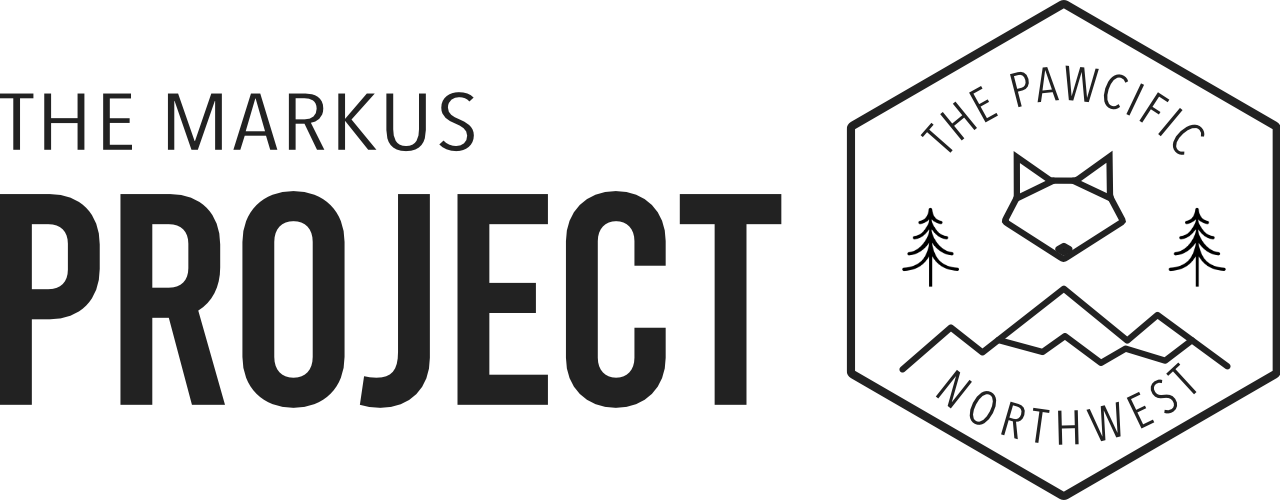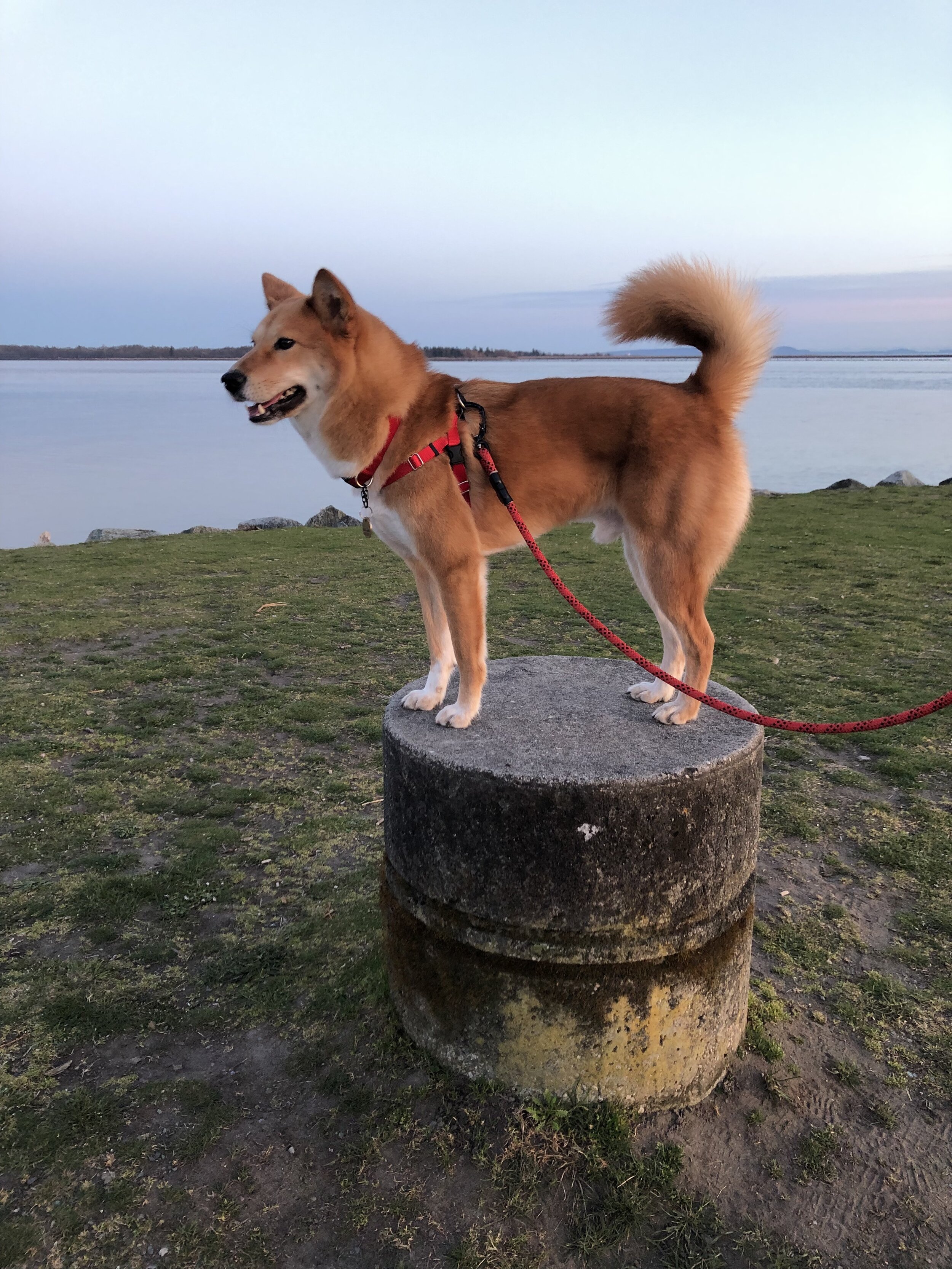Leash Training with Markus
Raising Markus is the series where we share stories about our time raising Markus. Said to be aggressive and having gone unadopted for over a year, Raising Markus is the story of a rescued dog from Korea given a second opportunity, now in Vancouver, Canada. This series will include the lessons, joys and struggles of dog owners fumbling our way through our first adoption. The hope is that if you're considering rescuing a dog of your own, our stories are useful to you.
There are a lot of varying training theories and methods for the best way to leash train your dogs. This week, we're sharing how we leash trained Markus - broken down by the harness and the leash separately. I don't know if ours is "the best", probably far from it, but it was the one that worked for us.
The Harness
Markus with the Easy Walk Harness by PetSafe and a 4-foot leash by Litto Howler
After a lot of research, we finally picked up a new harness for Markus. We've been meaning to do this for a long time now, but we had yet to find the right one that wasn't only secure, but comfortable for Markus as well. We've been using our current harness for about a year now and while it's been effective for training, we felt it was time to change.
Lately, some people have been asking us about using a front clip. It looks so uncomfortable, so why do we do it?
The uncomfortable part of the front clip is exactly why it works. If you think about the physics of the front clip (goodness knows I didn't do well in physics), if the leash is clipped to the front around the chest area and the dog tries to pull ahead, they end up getting pulled sideways because of where the clip is positioned. This is uncomfortable for the dog and when done enough times and they'll associate the uncomfortable feeling with the pulling so they eventually stop.
This type of training was very effective for Markus. It took him maybe all of a week to stop pulling as hard as he used to, but we kept the front clip harness on him for at least another year.
I'm not gonna lie - the front clip's annoying for the owner too. Even during regular walks when he isn't pulling, you're constantly having to readjust the leash whenever the dog changed sides. If your dogs walking on the right side, the leash is along the inside. Once they change sides, suddenly the leash is outside and you need to readjust below the dog's neck again. Having to do this all the time was tedious, but it was worth it for the long haul.
With the Easy Walk Harness by PetSafe, we noticed that the straps (unrelated to the front clip) were really bound Markus' shoulders and constricted the way he moved. We wanted to look for another harness that gave him the freedom to move around a bit more freely.
Markus switching to the back clip with his Freedom No-Pull Harness
We ended up finding the Freedom No-Pull Harness, which was the perfect stepping stone harness. The Freedom No-Pull Harness comes with a front clip, which allows us to keep up with the training, but it also comes with a back clip to start transitioning him to the back.
What's nice about the Freedom No-Pull Harness is that if the dog started to pull, the harness tightens around the body. Since this maintained the training to not pull from the back, it seemed like the natural next step for us in our leash training.
And wow, was it night and day in terms of comfort. Having the clip on the back was so much more comfortable, but it was also necessary for Markus' development. It was so nice to be able to use the back clip again.
And the good news with all of this was that Markus kept up with his training - he didn't pull (unless a squirrel runs by) and we're glad to see that the training was sticking.
The Leash
Markus with the 4-foot long leash from Litto Howler and his Freedom No-Pull Harness
Our leash is a basic 4-foot leash. That's it. We didn't need anything fancy because the harness did all of the work for us. That said, the length of the leash was very intentional.
We purposely went with a shorter leash so that Markus could establish proximity and boundaries around us. With a history of being a street dog and then having spent a long time at the rescue shelter, Markus had never been limited to where he was able to go when he was outside. We wanted to teach him that when he's out with us, his space is to be within 4 feet.
Bit by bit, when Markus' training improves and he's no longer pulling as much, we can slowly give him a longer leash.
And for this reason, we don't use retractable leashes. There's a time and place to use those, but they were never right for us. With retractable leashes, the boundaries are always changing and your dog isn't able to establish where you want them to be.
At the end of the day, all of this depends on how you want your dog's walking behaviour to be like. If you're comfortable letting your dog wander ahead, then a 4-foot leash won't be enough for you. For us, and because Markus is a predator at his core, we want Markus walking closer to us because he will jump at prey if he got the chance. For that reason, we like using our 4-foot leash and it's been very effective in terms of training Markus. As he improves, we'll give him more leash bit by bit in time.
We’re so grateful for your support of The Markus Project. We mostly choose our locations through searching and word of mouth. If you know of a park, trail or location you think we should check out, please share it with us. We’d love to know!




